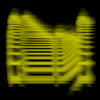| Author
|
Question about Spectal View
|
Speakafreaka
IsraTrance Junior Member

Started Topics :
18
Posts :
779
Posted : Jan 24, 2008 15:29
|
Yes, I'm interested in a VST unit that doesn't have a curve too, although, gotta say, I thought the curve in SPAN and gliss was controllable - maybe my mistake?
I check it by sticking white noise through - and you can defo get SPAN and gliss flat by using the slope box.
        . .
http://www.soundcloud.com/speakafreaka |

|
|
Colin OOOD
Moderator

Started Topics :
95
Posts :
5380
Posted : Jan 24, 2008 20:01
|
|
Tomos
IsraTrance Full Member

Started Topics :
84
Posts :
981
Posted : Jan 25, 2008 02:29
|
Since rearranging my setup I can't use Spectralab any more  Audio is digital out to a DAC, so can't put it back into the line in. Audio is digital out to a DAC, so can't put it back into the line in.
I've switched to Elemental Inspector on the master bus - but blimey it's a small display!
So, can I just check with you Colin I have the most useful view enabled? FFT, Logarithmic, no weighting. I don't understand the 'windows type'. Hann, Black-Har, Flat-top, Boxcar. I've seen these before, but changing them doesn't seem to affect the display.
Peak and Average seem the most useful curves, too much peak, you know something needs a big of compression or is too loud. Average on a near-completed track should look like an almost flat line from 200hz upwards, with a hump for bass (kick and bass should compliment each other shape-wise) and leads should be slightly above the line.
Valleys on the average curve need something to fill them, either a new instrument or raise the EQ or volume a bit on a few elements that sit there if it sounds okay.
Fair summary?
p.s. A lot of tracks I've looked at seem to have a little valley around the 4khz region, is this because the ears are more sensitive to this frequency so there should be less of it?
|

|
|
Colin OOOD
Moderator

Started Topics :
95
Posts :
5380
Posted : Jan 25, 2008 02:42
|
|
Tomos
IsraTrance Full Member

Started Topics :
84
Posts :
981
Posted : Jan 25, 2008 03:13
|
Agreed 
Having the knowledge to use extra tools is always handy though.
Cheers, keep up the good work - and I may be calling on your services at some point.
|

|
|
Speakafreaka
IsraTrance Junior Member

Started Topics :
18
Posts :
779
Posted : Jan 25, 2008 03:52
|
window type is a reference to the function used to smooth out the window - different windows have different properties. Some windowing functions will cause ripples to be shown above the fundamental of a pure sine wave, although they are not there - so these methods are used to eliminate discrepancies in the display which are misleading.
Try sticking a pure sine through and analyzing that... you should see the difference.
Final thoughts on window size.
Now, lets say we are producing on a system at 48Khz, just for the sake of argument.(its easier to type  ) )
To produce a signal at exactly one hz therefore, we would need a sine wave which cycles exactly once every 48000 samples.
And window size is determined in samples normally.
So as far as I know, when you have a big window size you get problems with an accurate representation of the uppers.
This is becuase upper freqs take many less samples to be produced - yet the window size does not vary according to content, so the average amplitude of the number of samples is determined for the window size at a given frequency.
In other words, don't use big window sizes for monitoring your uppers as it can't do em accurately, converserly, don't use small window sizes for lowers as it can't do these accurately.
If we take Gliss, it has a maximum window size of 16384 samples, which is perfectly in focus with no averaging of the signal at 2.9296875 hz in a 48000Khz system by my calculations.
The idea that bigger window size is more accurate is to my understanding of the subject (which could well be very wrong) not correct.
Bearing in mind that window size is not a measure of how often the waveform is sampked, but a measure of how many samples are analyzed when a sample of audio is taken. Its like a snapshot of the audio at any given moment.
To not distort the uppers (or the lowers) we would need a multiband FFT (which does exist, apparently), and to the best of my knowledge there is no audio suite offering this.
Anyhow, thats my understanding of it, and I'd be very interested to improve it if others know better! 
        . .
http://www.soundcloud.com/speakafreaka |

|
|
|